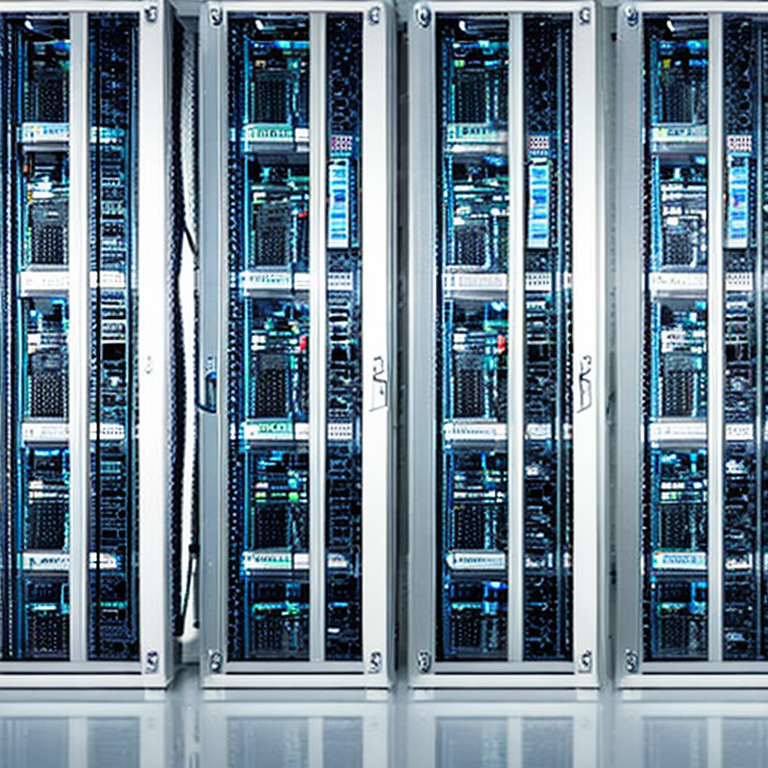Is 8GB RAM Enough for Web Development?
Is 8GB RAM Really Enough for Programmers & Web Developers?
I’ve been asked countless times, “how much RAM is enough for web development?” With the rapid advancement of technology, the requirements for hardware can change at a dizzying pace. But as of now, the magic number seems to be 8GB. In this comprehensive article, we’ll delve into why this is the case, and unravel the role RAM plays in programming and web development.
We’ll look at why 8GB of RAM suffices for programming, the RAM requirements of common development tools, and the performance of programming with 8GB RAM. We’ll also compare the efficiency and future-proofing potential of 8GB RAM against 16GB RAM, and discuss the ease of upgrading RAM when necessary. By the end of this article, you’ll have a clear understanding of how much RAM is enough for web development.
Introduction: Unraveling the Role of RAM
RAM (Random Access Memory) is a crucial component of any computer system. It serves as the “working space” for the CPU (Central Processing Unit) where data is temporarily stored for quick access. The more RAM you have, the quicker and smoother your computer operates, especially when running multiple applications or large programs.
In web development, RAM plays a vital role in ensuring that development tools and applications run smoothly. If you’re a web developer or planning to become one, it’s important to understand how much RAM is needed for efficient and effective programming. The amount of RAM you need can significantly influence your productivity and the overall quality of your work.
Understanding the Concept of RAM
RAM is the short-term memory of your computer. It temporarily stores the data your system is currently using, allowing it to be quickly accessed by the CPU. Unlike hard drive storage, which keeps data even when the computer is turned off, RAM is volatile, meaning it loses all its information when the system is shut down.
The amount of RAM in your computer determines how much data it can handle at any given moment. If you’re running multiple applications or using resource-intensive software, having more RAM can help your system handle these tasks more efficiently. Hence, knowing how much RAM is enough for web development is crucial in building a system that can handle your programming needs.
Why 8GB RAM Suffices for Programming
When it comes to programming, 8GB RAM is generally considered sufficient. Most programming languages and development tools don’t require a large amount of RAM. This includes popular languages such as Python, Java, and JavaScript, as well as text editors and integrated development environments (IDEs) like Visual Studio Code, PyCharm, and Eclipse.
However, the amount of RAM you need can also depend on your specific use case. If you’re developing complex web applications or using multiple virtual machines, you might need more than 8GB. But for the majority of programming tasks, 8GB should be enough to ensure smooth and efficient operation.
Understanding the Role of RAM in Web Development
In web development, RAM is used to run various development tools and applications, as well as to test and run the websites or web applications you’re developing. The more RAM you have, the more tasks you can perform simultaneously without experiencing slowdowns or crashes.
For example, you might need to have a text editor, a web browser, and a local server running at the same time while developing a website. If your system doesn’t have enough RAM, these applications might run slowly or not at all, hindering your productivity.
Essential Tools in Programming and Web Development
There are various tools used in programming and web development, each with its own RAM requirements. These include text editors, IDEs, web browsers, local servers, databases, and virtual machines.
Text editors like Sublime Text or Atom are relatively light and don’t require much RAM. On the other hand, full-featured IDEs like IntelliJ IDEA or Visual Studio can be quite resource-intensive, especially if you’re using many of their features simultaneously.
Web browsers can also consume a significant amount of RAM, especially when you have multiple tabs open. Local servers and databases used for testing and development purposes are also factors to consider, as they can take up a fair bit of memory.
RAM Requirements of Common Development Tools
Different development tools have different RAM requirements. For instance, Visual Studio, a popular IDE for C# and .NET development, recommends at least 8GB of RAM for optimal performance. Similarly, Android Studio, a widely used tool for Android app development, also suggests a minimum of 8GB.
On the other hand, lighter tools like VS Code or Sublime Text can run smoothly with much less RAM. But keep in mind that these are just the requirements for the tools themselves; you’ll also need enough RAM to run your operating system and any other applications you might be using simultaneously.
Practical Scenario: Performance of Programming with 8GB RAM
To give you a practical idea, let’s consider a common scenario. Suppose you’re developing a web application using a JavaScript framework like React or Angular. You have your text editor or IDE open, a web browser with multiple tabs for testing and reference, a local server running your application, and maybe a database as well.
In this scenario, 8GB of RAM should be more than enough to handle all these tasks without any noticeable slowdowns. Even if you’re using a more resource-intensive IDE or have a larger number of browser tabs open, you should still be able to work comfortably with 8GB.
8GB RAM vs 16GB RAM: A Comparative Analysis
While 8GB of RAM should suffice for most web development tasks, you might wonder if upgrading to 16GB could provide any benefits. The answer largely depends on your specific needs and workflow.
If you’re working on large, complex applications, or if you’re using multiple virtual machines, you might benefit from having more than 8GB of RAM. Similarly, if you frequently use resource-intensive software like 3D modeling tools or video editors alongside your development work, having more RAM could help.
However, for the majority of web developers, especially those just starting out, 8GB should be more than enough. Upgrading to 16GB might provide some extra headroom, but it’s unlikely to make a noticeable difference in most cases.
When comparing 8GB and 16GB RAM, it’s important to note that for most web development tasks, 8GB is sufficient. However, more complex tasks and larger projects may benefit from the increased capacity of 16GB. The difference in performance between 8GB and 16GB can be significant in these cases, as it can reduce lag and improve the speed of file processing.
But, in many cases, the average web developer won’t notice a substantial difference between the two, given that so much of our work is done in the cloud nowadays. Thus, doubling the amount of RAM doesn’t necessarily mean double the speed. It merely indicates that more data can be stored for quick access, which can be useful, but not always necessary.
Ultimately, the decision between 8GB and 16GB may come down to the types of projects you’re working on, your budget, and your personal preferences. If you’re doing heavy 3D rendering or working with large databases, you might want to consider 16GB. But for the majority of web development tasks, 8GB is more than enough.
Cost Efficiency: Why 8GB RAM is the Smart Choice
When we talk about cost efficiency, 8GB RAM is indeed the smart choice for web development. It’s more affordable than 16GB, making it a great choice for beginners or those on a tight budget. Despite being cheaper, it does not compromise on performance for the vast majority of web development tasks.
Moreover, the cost of RAM is not just the upfront price. There’s also the energy cost to consider. More RAM means more power consumption, which can add up over time, especially if you’re a heavy user. Thus, 8GB RAM is not only cheaper to buy, but also cheaper to run.
In the long run, choosing 8GB over 16GB can save you a significant amount of money, without sacrificing the quality of your work or your efficiency. It’s a win-win situation!
Future Proofing: Is 8GB RAM Enough for Future Needs?
The world of technology is always evolving, and web development is no different. With new tools and technologies emerging all the time, it’s natural to question whether 8GB of RAM will be enough to cater for future needs.
The good news is, for the foreseeable future, 8GB of RAM should still be adequate for most web development tasks. As we’ve mentioned before, much of web development now takes place in the cloud, which takes a lot of the load off your local machine.
However, it’s also worth noting that RAM is quite easy to upgrade. If you find that future developments in the field do require more memory, it’s usually a fairly simple process to add more to your machine. This means that starting with 8GB doesn’t have to limit you in the long term.
Upgradability: The Ease of Enhancing RAM
One of the great things about RAM is that it’s one of the easiest things to upgrade on a computer. If you find that your needs have increased, or you want to improve your machine’s performance, adding more RAM is a simple and cost-effective solution.
Most laptops and desktops have slots for RAM addition, and the process of installing new RAM is straightforward with numerous online tutorials available. This means that even if you start with 8GB and later decide you need more, the upgrade process is quite easy.
In conclusion, while 8GB RAM is sufficient for most web development tasks, your machine’s upgradability means that you can easily adapt to any future needs that might arise.
Conclusion: Deciding on the Right Amount of RAM
In conclusion, when it comes to the question of how much ram is enough for web development, the answer is 8GB. It provides the perfect balance between cost and performance. It’s more than enough to handle the majority of web development tasks, and it’s also easy on the wallet.
While there may be scenarios where more RAM could be beneficial, for the majority of web developers, 8GB will serve them well. And if the need arises, upgrading to more RAM is a straightforward process.
So, if you’re starting out in web development or looking to upgrade your current machine, 8GB RAM is indeed a smart and cost-effective choice. Happy coding!








